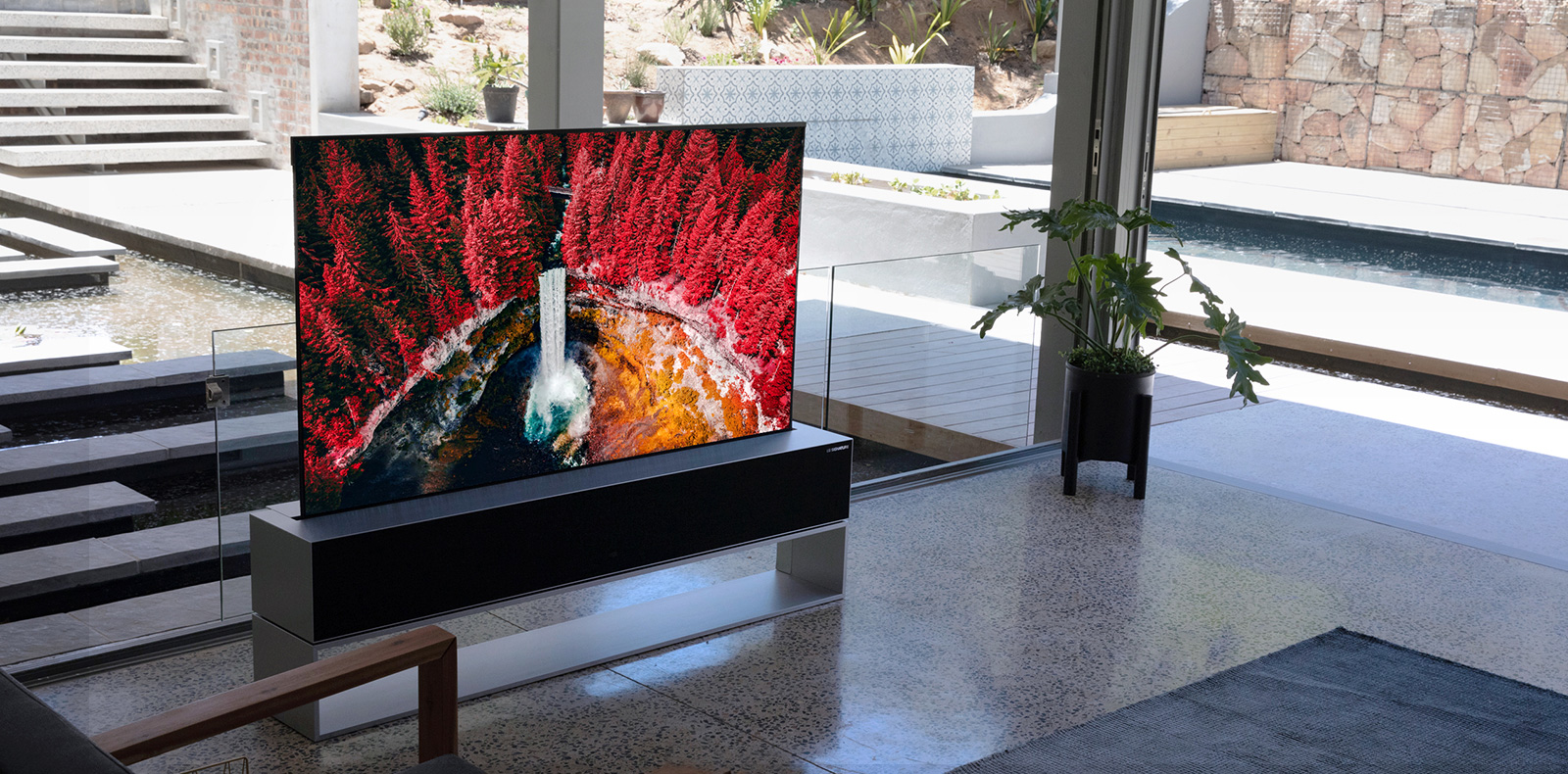Is the LG rollable OLED a better speaker than a TV?
The LG rollable OLED's speaker system may be its key feature

LG's rollable OLED TV has finally released in key markets, but the exact sense of who's buying it – and who can afford to – still somewhat eludes us. But our own interview with LG Electronics may have given us a hint as to what the biggest pull of the rollable OLED may actually be.
We've decried the rather average built-in sound systems of flagship LG TVs before, with the likes of the LG C1 OLED and LG G1 Gallery Series packing in a flat 40W with some slightly muddied bass – without the audio finesse of speaker-first televisions like the Panasonic JZ2000.
Of course, sound is often a secondary consideration in a new TV purchase – the pictures tend to be the main thing – but the LG rollable OLED's sound system really does elevate it above what's expected on an LG TV.
- What is OLED?
- Check out the best OLED TVs out there
- Or just the best 48-inch OLED TVs
As Tim Alessi (LG Electronics USA's Head of Home Entertainment Product Marketing) tells us, the sound system on the rollable OLED was only made possible because of its rolling mechanism – a canny system that enables you to furl and unfurl the screen, much like a sail, or a carpet.
It's this mechanism that raises the price of the rollable OLED so high, meaning it will cost you $100,000 / £100,000 to get in your home, but it's also this that enabled LG to embrace a hefty sound system like never before.
"The reason we're able to do that is we needed a place for the rolling mechanism anyway; so we figured why not put in a more robust audio system," Alessi says, adding that "I think the audio system will be very popular."
Rollable feeling
The LG Signature OLED R, or 'rollable OLED', packs in a 100W 4.2 channel speaker system with Dolby Atmos support – not quite as advanced as some 5.1.2 surround sound setups, but still well beyond the capabilities of its other 4K OLED TVs. We see the same 40W 2.2 channel Dolby Atmos speakers across the LG B1 OLED, LG C1 OLED, and LG G1 OLED models – while the entry-level LG A1 makes do with a simpler 20W setup instead.
Sign up for breaking news, reviews, opinion, top tech deals, and more.
But not only does the rollable OLED TV pack some serious sound – its mechanical unfurling mechanism also means it can transform from an impressive OLED screen into a compact speaker.
The so-called 'Line View' allows you to keep the screen at half-mast, utilising around a third of the display's height and leaving a narrow content view with basic menu functions – including showing what music is playing through the speakers – while you can also keep listening to tunes even when the screen is entirely hidden in the display's base.
The screen's ambient settings, too, mean you can enjoy the sound of a crackling campfire or peaceful snowfall with an accompanying picture along the partial Line View screen – with far more audio detail than's possible on the average smart TV.
Obviously, the price of the LG rollable OLED will be far out of the realms of all but a few ultra high-net-worth individuals. At this point it largely acts as a proof of concept for what LG's engineers can do, and what might trickle down to the best LG TVs down the line.
It's hard to justify buying the rollable OLED when the picture performance is the same as the LG C1 OLED – which retails for $1,500 / £1,500 at a 55-inch size. You could buy almost 10 of those screens for the price of one OLED R.
While we can't imagine rollable functionality coming to the LG C Series anytime soon, something like the boosted audio capabilities of the LG rollable OLED could be ported more easily – and cheaply – to more affordable sets. We just hope LG makes use of its own advancements at some point in the future, and that we won't have to wait too long.
- Check out the best TVs, bar none

Henry is a freelance technology journalist, and former News & Features Editor for TechRadar, where he specialized in home entertainment gadgets such as TVs, projectors, soundbars, and smart speakers. Other bylines include Edge, T3, iMore, GamesRadar, NBC News, Healthline, and The Times.